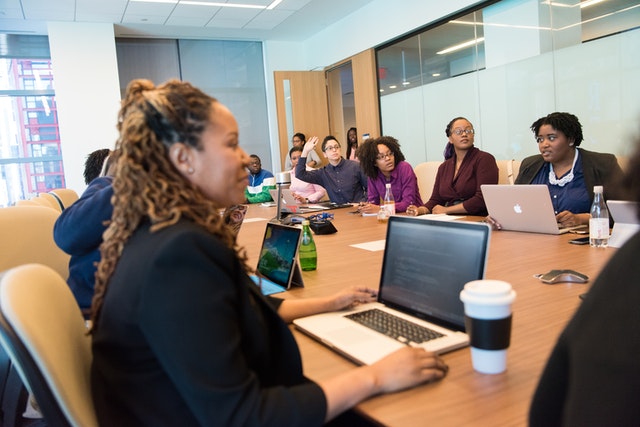
10 Tips for Effective Diversity Training
Modern technology has accomplished a lot. One of its most profound impacts is its role in bringing people closer together, making geographical boundaries less relevant, and fortunately given current world realities and future trending, this applies just as much to the workplace as any other sphere of life. With your organization’s workforce becoming more diverse every day, effective diversity training is critical to success.
What is Diversity Training?
From basic diversity awareness to developing valuable diversity cultural skills, an organization’s success hinges upon how effectively they provide the right tools and support to their employees. These tools should function to maximize every employees’ development and performance and minimize the legal risks should there be diversity-based discrimination in the workplace.
The Human Resources departments and departmental managers in any company face innumerable diversity-related issues day in and day out. This could be exclusion from a project based on gender or resentment from coworkers against others of a different religion. To handle such issues, organizations incorporate diversity training into their training agenda. This is an initiative taken by most companies with the goal of creating awareness of diversity issues and bringing about cohesiveness in teamwork environments.
Diversity training can be divided into two general categories: awareness-based training, and skill-based training.
Awareness-Based Training
This is usually used as a sensitizer for employees, dealing with the task of making employees aware of the importance of diversity in business. It also works to help draw attention to employees’ own prejudices, and their cultural assumptions about others. This type of training uses case studies and experiential exercises as a method of diversity training implementation.
Skill-Based Training
This type of training deals with developing and improving employees’ proficiency in handling diversity in the workplace. Various tools are used to help shift employees from the awareness stage into the proficiency stage. The aim of this type of training is to improve employees’ interpretation of cross-cultural differences, communication with people from different cultures, and their adaptability.

Why is Diversity Training Important?
Any company, no matter the size or industry, depends upon a team of specialized members. These members can include those who are tech-oriented, human resources-oriented, finance-oriented, and all other specialized types of employees that exist in the workplace. All individual members come together to form the foundation of a successful team.
When you look more closely, you can see that each of these subgroups of specialists requires different attitudes and skills to perform their work functions successfully. In fact, it is this specific and distinct attitude, behavioral style, thinking style, and practical skillset that allows every individual team member to contribute in their own valuable way.
Managing diversity in the workplace can be a complex task, but its ultimate goal is to reiterate the value in appreciating every different perspective and skill set that results from a diverse team. The aim of diversity training is to make employees understand that even if there are differences amongst their team members, with a little adjustment in one’s attitude, diversity can, in fact, make for an extraordinary team. Diversity training should make employees not only tolerant of the differences they see in their workplace but teach them to value those differences as a part of successful teams.
10 Tips for Implementing Effective Diversity Training
To implement an effective training program in your organization, consider following the following 10 tips for success.
1. Diversity as a Daily Practice
Sparse diversity training that takes place for a few hours a couple of times a year is not an effective way to boost awareness and promote inclusion. In order to ensure the effectiveness of your diversity training program, awareness and inclusion must be a part of the everyday workplace.
One of the most effective ways to promote everyday diversity training is to leverage a calendar, using it to promote awareness in the following ways:
- Monthly Themes – there are many monthly diversity heritage themes throughout the year, including Black History Month, Women’s History Month, LGBT Pride Month, and so on. Including these in the office calendar is a great opportunity to bring awareness to these diversity groups.
- Religious Events – many religious holidays and practices can affect an employee’s time in the workplace. Religions that may require an employee to take time off work include Judaism, Islam, Hinduism, and Buddhism. Most workplaces acknowledge Christian holidays but aiming to include these others in your calendar promotes inclusivity and encourages employees to remain respectful of their coworkers’ religious obligations.
2. Be Clear About Training Goals
Training materials in many diversity training programs are often selected without keeping in mind the goals they are meant to promote. In your diversity training, aim to make your goals as clear as possible to employees. Think critically about what you want the audience to take away from training, and if possible, choose materials that have a pre- and post-test in order to measure progress and success.
3. Get Support from All Levels
Before beginning any serious diversity training effort, ensure you have support from top management. In order to access the resources required for a strong diversity training program, you need buy-in from above. However, this effort goes beyond upper-level support. You should also aim to promote diversity training to your constituents, convincing everyone, at all levels, that diversity training is in their best interest.

4. Aim for Respectful, Tolerant Behavior
The goal of diversity training is to promote effective, productive teamwork. It is a crucial step in diminishing and/or eliminating many of the barriers to such teamwork.
5. Get the Right Materials for Your Audience
Different people and workplaces require different types of training and materials. Instead of trying to adapt your pre-existing training materials to suit the audience, take advantage of the wide range of resources available today, and curate a program to your specific audience.
This can include leveraging new technologies. There are many online diversity training programs and software you can experiment with. These might be more cost-effective, efficient, and useful in providing necessary evaluation tools.
6. Be Engaging
In order for diversity training to be effective, you must be able to engage employees. Experiment with different ways to engage your audience, exploring interactive learning tools, to dynamic, in-person team activities. For some audiences, diversity training videos can be useful.
7. Post-Assessment
Any diversity training should include some sort of follow-up stage, in which an evaluation takes place after the training in order to ensure continuous training improvement. Keep your options flexible, adapting to the results from these assessments and curating the on-going training experience to your audience’s success.
8. Diversity Events
Diversity training should always involve organization-wide awareness, and this can be achieved through key diversity events. These events can lead to higher productivity, easier scheduling and holiday planning, and work to ensure diversity groups within the workplace receive proper respect and recognition. Try to include these on your diversity calendar.
9. Diversity is More Than Just Cultural Facts
In order to raise diversity awareness, your training should go beyond surface-level understandings of the differences in cultures. Different customs, proper greetings, respective holidays or religious times, and modes of observance are all important for raising awareness and boosting understanding.

10. Be Patient
Perhaps the most challenging step of any diversity training program is being patient when waiting to see results. Miracles do not happen overnight; employees do not reach epiphanies over the course of one training session. Any effective change is bound to take time, but ultimately, this change will provide a high return on your investment. Make sure your diversity training is more than just an isolated, or occasional, event. It should be part of an on-going effort, imbedded and supported by a variety of non-training efforts in your workplace. Some of these can include affinity groups, mentorship programs, talent development plans, and recruitment and retention processes.
Diversity Training Educates Employees on the Proper Way to Treat People of Different Backgrounds
The primary goal of a successful diversity training program is to create a positive work environment by helping employees recognize and be tolerant of differences among co-workers. Diversity training presents an opportunity for employers to educate their employees about the value of diversity, and while it cannot completely change an individual’s personal beliefs, it can have the power to increase awareness, impart knowledge, and educate employees on how to accept differences among fellow employees.




